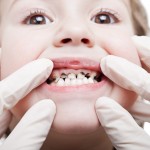
Early childhood caries (ECC) is a significant global health problem. Silver diamine fluoride (SDF) has been shown to reduce caries and SDF at 38% has been used to arrest ECC in Argentina, Australia, Brazil, China, Japan, and recently the United States.
The aim of this review was to investigate the clinical effectiveness of silver diamine fluoride (SDF) in arresting dental caries among children.
Methods
Searches were conducted in the PubMed, Embase, Scopus, China National Knowledge Infrastructure (CNKI), Ichushi-web, Biblioteca Virtual en Salud Espana (BVSE) and Biblioteca Virtual em Saude (BVS) databases. Prospective clinical studies investigating the caries-arresting effect of SDF treatment in children with or without control groups were considered
Two reviewers selected studies with a third reviewer arbitrating disagreements. Two reviewers independently abstracted data and risk of bias was assessed. Random effects meta-analysis was carried out on studies were caries arresting rates were presented or could be calculated.
Results
- 19 studies were included (16 in primary dentition, 3 in permanent)
- 14 studies used 38% SDF
- Meta-analysis was conducted on 8 studies, which used 38% SDF to arrest dentine caries in primary teeth. The overall caries arresting rate was 81% (95% CI; 68% to 89%).
| Caries arresting rate | 95% Confidence interval | Probability P | |
| 6 months | 86% | 47% to 98% | = 0.06 |
| 12 months | 81% | 59% to 93% | = 0.01 |
| 18 months | 78% | 70% to 85% | < 0.001 |
| 24 months | 65% | 35% to 86% | = 0.32 |
| > 30 months | 71% | 56% to 83% | = 0.01 |
| Overall | 81% | 68% to 89% | < 0.001 |
Conclusions
The authors concluded: –
SDF was commonly used at a high concentration (38%; 44,800 ppm fluoride) and is effective in arresting caries among children. There is no consensus on its number and frequency of application to arrest caries. Further studies are necessary to develop evidence-based guidelines on its use in children.
Comments
The reviews have conducted a broad ranging search for papers on this question and included studies published in a number of languages. This is helpful, as SDF in nor commonly sued in most developed western countries. While an assessment of study quality has been carried out clear descriptions if the study designs of the included studies is not provided. Although from the risk of bias table one could assume that 8 included studies are RCTs but it is important to note that none of the included studies could be considered to be at low risk of bias. Consequently the quality of the overall evidence available for this review is low.
A broader review by the same group published earlier this year (Dental Elf – Mar 21st 2016) included 5 RCTs studies using 38% SDF found the overall proportion of arrested dentine caries after SDF solution treatment was 65.9 % (95 % CI; 41.2 % – 90.7 %; p< 0.001). A might be anticipated the figure for caries reduction is lower than the 81% reported here as it is restricted to RCTs.
Overall all included studies do demonstrate an ability to arrest caries and SDF does offer a lower cost alternative to other topical fluorides for caries prevention. However, it does have one important limitation in that SDF treatment will stain carious lesions black, which may not be acceptable for some children and their parents. As the authors suggest further high quality RCTs are necessary to clarify the size of the caries reduction effect and to determine the optimum number of frequency of application to arrest decay. This would also understand the cost-effectiveness of SDF treatment.
Links
Primary paper
Gao SS, Zhao IS, Hiraishi N, Duangthip D, Mei ML, Lo ECM, Chu CH. Clinical Trials of Silver Diamine Fluoride in Arresting Caries among Children A Systematic Review. JDR Clinical & Translational Research August 15, 2016
Other references
Dental Elf Mar 21st 2016
Topical fluoride for remineralising and arresting carious lesions

Silver diamine fluoride to arrest caries in children? https://t.co/WKpHuJz91a
Silver diamine fluoride can arrest caries in children https://t.co/WKpHuJz91a
Review finds silver diamine fluoride can arrest caries in children https://t.co/WKpHuJz91a
Silver Diamine #Fluoride can arrest caries in children. https://t.co/5LbJir5u02 #Pediatric #PediatricDentistry https://t.co/QUN11XYp0I
38% silver diamine fluoride effective at arresting caries in children? https://t.co/WKpHuJz91a
Caries in children arrested with 38% silver diamine fluoride https://t.co/WKpHuJz91a
Don’t miss-Silver Diamine Fluoride can arrest caries in children https://t.co/WKpHuJz91a
Is this available in the UK?
Silver Diamine Fluoride can arrest caries in children – National Elf Service https://t.co/zJA1jnb1tc https://t.co/2iobxhHw6S
They were advocating this at the Kois Symposium in Seattle earlier this month – does anyone know if it is available in the UK?
I understand that one product (Riva Star) is now available in the UK